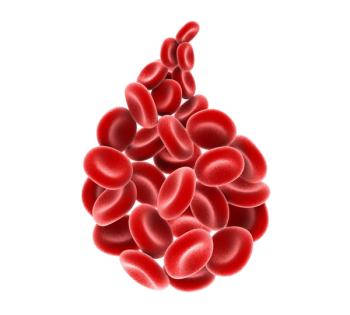
Taletrectinib Yields Durable Responses, Prolonged PFS in ROS1+ NSCLC
Pooled results from the TRUST-I and TRUST-II trials showed that taletrectinib led to infrequent neurological TEAEs in patients with ROS1-positive NSCLC.
Taletrectinib (Dovbleron) demonstrated positive efficacy, including durable responses, prolonged survival, strong intracranial activity, and a favorable safety profile in patients with ROS1-positive non–small cell lung cancer (NSCLC) regardless of prior tyrosine kinase inhibitor (TKI) exposure, as was shown in results from the phase 2 TRUST-I trial (NCT04395677) and the phase 2 TRUST-II trial (NCT04919811).1
Among TKI-naïve patients (n = 160), the confirmed objective response rate (ORR) was 88.8% (95% CI, 82.8%-93.2%); 8 patients achieved complete responses (CRs), and 134 patients achieved partial responses (PRs). The disease control rate (DCR) was 95.0% (95% CI, 90.4%-97.8%). In those who received prior chemotherapy (n = 32), the ORR was 87.5% (95% CI, 71.0%_96.4%) vs 89.1% (95% CI, 82.3%-93.9%) in those without chemotherapy (n = 128). The median duration of response (DOR), in patients with CRs, was 44.2 months (95% CI, 30.4-not reached [NR]), and the estimated 36-month DOR rate was 57.7% (95% CI, 45.0%-68.5%); the median time to response was 1.4 months (95% CI, 1.4-1.4).
The median progression-free survival (PFS) was 45.6 months (95% CI, 29.0-NR), with an estimated 36-month PFS rate of 52.6% (95% CI, 41.0%-62.9%), and the median overall survival (OS) was NR, with an estimated 36-month OS rate of 66.3% (95% CI, 55.3%-75.2%).
In patients who were pretreated with a TKI (n = 113), the confirmed ORR was 55.8% (95% CI, 46.1%-65.1%), and 5 patients achieved CRs, and 58 achieved PRs. The DCR was 87.6% (95% CI, 80.1%-93.1%). In patients who received prior crizotinib (Xalkori; n = 103) or prior entrectinib (Rozlytrek; n = 10), the confirmed ORRs were 53.4% and 80.0%, respectively. In patients who did (n = 42) and did not (n = 71) receive prior chemotherapy, the confirmed ORR was 59.5% (95% CI, 43.3%-74.4%) and 53.5% (95% CI, 41.3%-65.5%). The median DOR was 16.6 months (95% CI, 10.6-27.3) with a 12-month DOR rate of 61.1% (95% CI, 46.3%-73.1), and the median time to response was 1.4 months (95% CI, 1.4-1.4).
The median PFS was 9.7 months (95% CI, 7.4-12.0) with an estimated 12-month PFS rate of 39.7% (95% CI, 29.6%-49.6%). The median OS was NR with an estimated 12-month OS rate of 77.5% (95% CI, 68.1%-84.5%).
In patients who were TKI-naïve, the intracranial ORR was 76.5% (95% CI, 50.1%-93.2%) with an intracranial DCR of 88.2% (95% CI, 63.6%-98.5%); the median intracranial DOR was 14.7 months (95% CI, 4.2-30.2). In patients who were pretreated with TKIs, the intracranial ORR was 65.6% (95% CI, 46.8%-81.4%) with an intracranial DCR of 93.8% (95% CI, 79.2%-99.2%); the median intracranial DOR was 11.9 months (95% CI, 6.9-23.5).
“Approximately one-third of patients with ROS1-positve NSCLC have a brain metastasis at diagnosis, which can be as high as 50% in previously treated patients,” stated lead study author Caicun Zhou, PhD, MD, director of the Department of Oncology at Shanghai Pulmonary Hospital and director of the Cancer Institute at Tongji University, with coauthors in the study.1,2 “In this integrated analysis from TRUST-I and TRUST-II, taletrectinib demonstrated high and durable overall and [intracranial] response rates and prolonged PFS in both TKI-naïve and TKI-pretreated patients, with activity against G2032R acquired resistance mutations, establishing taletrectinib as a potential best-in-class ROS1 TKI for advanced ROS1-positive NSCLC.”
The pooled analysis from TRUST-I and TRUST-II included a total of 273 patients. TRUST-I patients were split into 2 cohorts; cohort 1 enrolled patients who were TKI-naïve, and cohort 2 enrolled patients who progressed on prior crizotinib. TRUST-II followed a similar structure, enrolling patients with ROS1-positive, TKI-naïve NSCLC in cohort 1 and patients who were pretreated with at least 1 prior ROS1TKI such as crizotinib or entrectinib. All patients received 600 mg of oral taletrectinib once daily in 21-day treatment cycles.
The study authors noted that eligibility criteria were mostly similar, and that eligible patients had advanced NSCLC, at least 1 measurable baseline lesion, and locally documented evidence of ROS1 gene fusions. Additionally, patients had an ECOG performance status of 0 or 1 and adequate hepatic, renal, and bone marrow function.
Both trials’ primary end point was independent review committee–assessed confirmed ORR per RECIST v1.1 criteria. Secondary end points included DCR, DOR, time to response, and PFS.
In 32 patients who had rebiopsy samples after progression on prior crizotinib or entrectinib, 41% (n = 13) had a baseline G2032R mutation; of them, 61.5% (n = 8; 95% CI, 31.6%-86.1%) had responses.
The safety analysis contained 352 patients who received once-daily oral taletrectinib at 600 mg. Treatment-emergent adverse events (TEAEs) occurred in 99.7% of patients, with 51.4% experiencing a grade 3 or higher TEAE. The most common TEAEs were increased aspartate aminotransferase (71.9%), increased alanine aminotransferase (67.6%), and diarrhea (63.6%). Serious TEAEs occurred in 30% of patients, and TEAEs led to dose interruption, dose reduction, and discontinuation in 40.6%, 29.0%, and 6.5%, respectively.
The study authors also noted that neurologic TEAEs were uncommon, with dizziness occurring in 21% and dysgeusia in 15%, most of which were grade 1.
References
- Pérol M, Li W, Pennell NA, et al. Taletrectinib in ROS1+ non-small cell lung cancer: TRUST. J Clin Oncol. Published online April 3, 2025. doi:10.1200/JCO-25-00275
- Gendarme S, Bylicki O, Chouaid C, Guisier F. ROS-1 fusions in non-small-cell lung cancer: evidence to date. Curr Oncol. 2022;29(2):641-658. doi:10.3390/curroncol29020057
Newsletter
Stay up to date on recent advances in the multidisciplinary approach to cancer.


















































































